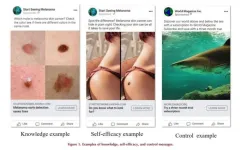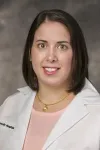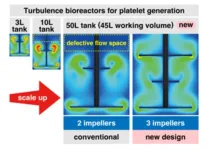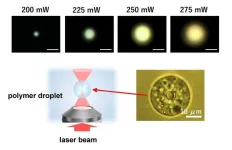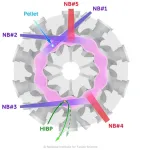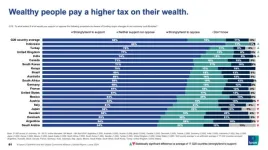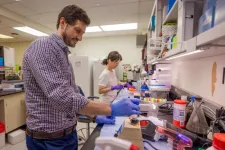(Press-News.org) It’s summer and time to enjoy the sunshine. But it’s also important to do so safely. Skin cancer is the most common form of cancer in the United States—and it’s most commonly caused by sun exposure. Research has shown that skin self-awareness and regular skin self-examinations are strongly linked to better treatment outcomes if you receive a skin cancer diagnosis.
As part of an effort to identify effective interventions to increase skin self-examinations and decrease melanoma deaths, faculty from Oregon Health & Science University and Lewis & Clark—along with colleagues at the Fred Hutchinson Cancer Research Center and the University of Washington—have conducted the first population-based survey of melanoma literacy in the United States.
Knowledge + Confidence
Results from 2,326 responses to the survey of 15,000 households in Oregon, Washington, and Utah point to increasing melanoma knowledge combined with strengthening skin-check confidence as having great potential to increase early detection and save lives. The research is described in an article in the journal Pigment Cell & Melanoma Research called “Melanoma literacy among the general population of three western U.S. states.”
“The study we did with Oregon and two other states showed that, generally, people knew that they should check their own skin, but they did not feel confident that they would be able to do so successfully,” said Brian Detweiler-Bedell, professor of psychology and director of the Bates Center for Entrepreneurship and Leadership at Lewis & Clark. “So, there was a gap there.”
“We knew we needed to focus particularly on how to help people become more confident in their ability to check their own skin,” said Jerusha Detweiler-Bedell, professor of psychology and director of L&C’s Center for Community and Global Health.
The Detweiler-Bedels lead the behavioral science aspect of the research. The lead physician-scientist on the project is Dr. Sancy Leachman, John D. Gray Endowed Chair for Melanoma Research and Professor of Dermatology at Oregon Health & Science University’s School of Medicine.
“With melanoma, your eyes really can be your best tool. A mole or spot on your skin that is changing in appearance—size, shape, color—is a key indicator for melanoma,” said Leachman. “And the data is clear: When melanoma is caught early, in stage 1 or 2, the five-year relative survival rate is extremely high—almost 100 percent. When it’s caught late, in stage 4, the five-year relative survival is only 35 percent! That’s why it’s so important that people are empowered to check their skin regularly, and we get the word out about the tools that can help.”
Among respondents, skin self-exam performance was most strongly associated with higher melanoma knowledge and more self-efficacy, or confidence in one’s ability to effectively complete an action.
Social Media Ads
As a next step, Dr. Leachman and the Detweiler-Bedells collaborated with faculty at the Center for Science Communications Research at the University of Oregon to develop and test a number of social media advertisements intended to increase melanoma knowledge and skin-check confidence. The results were recently published in the journal JID Innovations in an article titled “Evidence-Based Communication to Increase Melanoma Knowledge and Skin Checks.”
“If you look at the results, the true active ingredient is confidence,” says Brian Detweiler-Bedell.
“We were able to demonstrate that the combination of knowledge and confidence is important, but in particular, it is the confidence that really matters,” says Jerusha Detweiler-Bedell. “Of course, you need to know what unhealthy or potentially suspicious moles look like. But you might ignore or just not even try to check your own skin if you don't first believe in yourself.”
Additional authors include faculty from the Center for Science Communication Research, School of Journalism and Communication at University of Oregon, and the Department of Psychology, College of Arts and Sciences at The Ohio State University.
END
Doing a skin check? Confidence is key & social media ads may help
OHSU and Lewis & Clark lead the first population-based survey of melanoma literacy in the United States; A follow-up study using social media ads reveals that combining melanoma education and self-efficacy is the best health communication strategy
2024-06-24
ELSE PRESS RELEASES FROM THIS DATE:
Researchers engineer AI path to prevent power outages
2024-06-24
University of Texas at Dallas researchers have developed an artificial intelligence (AI) model that could help electrical grids prevent power outages by automatically rerouting electricity in milliseconds.
The UT Dallas researchers, who collaborated with engineers at the University at Buffalo in New York, demonstrated the automated system in a study published online June 4 in Nature Communications.
The approach is an early example of “self-healing grid” technology, which uses AI to detect and repair problems such as outages ...
International collaboration lays the foundation for future AI for materials
2024-06-24
Artificial intelligence (AI) is accelerating the development of new materials. A prerequisite for AI in materials research is large-scale use and exchange of data on materials, which is facilitated by a broad international standard. A major international collaboration now presents an extended version of the OPTIMADE standard.
New technologies in areas such as energy and sustainability involving for example batteries, solar cells, LED lighting and biodegradable materials require new materials. Many researchers around the world are working to create materials that have not existed before. But there are major challenges in creating materials ...
Refining turbulent flow to scale up iPS cell-based platelet manufacturing
2024-06-24
iPS cell-derived expandable immortalized megakaryocyte progenitor cell lines (imMKCLs) represent a renewable means to produce large amounts of platelets ex vivo for transfusion. Despite generating 100 billion (1011) competent iPS cell-derived platelets using a 10-L tank system previously by recreating turbulent flow with optimal turbulent energy and shear stress, true industrial-scale manufacturing is necessary for a consistent supply of transfusable platelets for patients with thrombocytopenia and other platelet disorders. As such, the team began this study by developing a 50 L good manufacturing practices (GMP) grade, single-use United States Pharmacopoeia ...
Can acupuncture lessen hot flashes and other side effects of anti-hormonal breast cancer therapy?
2024-06-24
In a pooled analysis of three clinical trials, acupuncture significantly reduced hot flashes and other hormonal side effects of endocrine therapy taken by women with breast cancer. The analysis of data from the United States, China, and South Korea is published by Wiley online in CANCER, a peer-reviewed journal of the American Cancer Society.
Endocrine therapy, which blocks hormone signaling that drives some forms of breast cancer, can be a life-saving treatment, but up to 80% of patients who take it experience hot flashes—a ...
Novel application of optical tweezers: colorfully showing molecular energy transfer
2024-06-24
A novel technique with potential applications for fields such as droplet chemistry and photochemistry has been demonstrated by an Osaka Metropolitan University-led research group.
Professor Yasuyuki Tsuboi of the Graduate School of Science and the team investigated Förster resonance energy transfer (FRET), a phenomenon seen in photosynthesis and other natural processes where a donor molecule in an excited state transfers energy to an acceptor molecule.
Using dyes to mark the donor and acceptor molecules, the team set out to see if FRET could be controlled by the intensity of an optical force, in this case a laser beam. By focusing a laser beam on an isolated polymer droplet, the team ...
Discovery of spontaneous inflow and outflow states of high-temperature plasma by energetic ions
2024-06-24
Background
In the realm of fusion research, the control of plasma density, temperature, and heating is crucial for enhancing reactor performance. Effective confinement of plasma particles and heat, especially maintaining high density and temperature at the core where fusion occurs is essential. In the Large Helical Device (LHD)*1, challenges persist as the electron density profile often remains flat or even depressed at the center, complicating effort to sustain high central density.
Results
The LHD is equipped with five neutral beam (NB) injectors*3 for plasma ...
Tax the rich, say a majority of adults across 17 G20 countries surveyed
2024-06-24
A new survey of adult citizens in 18 of the world’s largest economies has revealed majority support for tax reforms and broader political and economic reform. (Not all questions were asked in China, as indicated when findings reference 17 G20 countries.)
Around two-thirds (68%) of citizens across 17[1] G20 countries surveyed back a wealth tax on wealthy people as a means of funding major changes to our economy and lifestyle, with only 11% opposed, while 70% support higher rates of income tax on wealthy people, and 69% favour higher tax rates on large businesses, according to the survey conducted by Ipsos.
Support for a wealth tax on ...
Semaglutide leads to greater weight loss in women than men with HF, improves HF symptoms in both sexes
2024-06-23
Key Findings:
Weight Loss: Women lost 9.6% of their body weight on average with semaglutide, compared with 7.2% in men, marking a significant difference.
Symptom Improvement: Both sexes saw notable improvements in HF symptoms, physical limitations, and exercise function.
Heart Failure Benefits Beyond Weight Loss: Despite greater weight loss in women, the improvement in HF symptoms was similar between sexes, suggesting semaglutide's heart failure benefits may be, in part, independent of weight loss.
WASHINGTON (June 23, 2024) – Semaglutide, a medication initially developed for ...
12.5, the 1st Impact Factor of COMMTR released!
2024-06-22
Clarivate released the first Impact Factor (2023 IF) of Communications in Transportation Research (COMMTR) on June 20, 2024. COMMTR's 2023 IF is 12.5, ranking in Top 1 (1/57, Q1) among all journals in "TRANSPORTATION" category, and its 2023 CiteScore is 15.2 (top 5%) in Scopus database.
We would like to express our sincere appreciation for the authors, reviewers, readers, editorial board members for helping to make the journal a success. We welcome your continued readership and article ...
Circadian clock impact on cluster headaches funded by $2.4M NIH grant for UTHealth Houston research
2024-06-21
The link between severe headache disorders headaches and the body’s circadian clock in pain timing and thresholds will be studied with a $2.4 million grant from the National Institute of Neurological Disorders and Stroke (NINDS) to UTHealth Houston researchers.
The research is led by two faculty members of McGovern Medical School at UTHealth Houston: Mark Burish, MD, PhD, associate professor in the Vivian L. Smith Department of Neurosurgery, and Seung-Hee Yoo, PhD, associate professor in the Department of Biochemistry and Molecular Biology.
The study builds on earlier research by Burish and Yoo, funded by the Will Erwin Headache Research Foundation and published ...
LAST 30 PRESS RELEASES:
Low daily alcohol intake linked to 50% heightened mouth cancer risk in India
American Meteorological Society announces Rick Spinrad as 2026 President-Elect
Biomass-based carbon capture spotlighted in newly released global climate webinar recording
Illuminating invisible nano pollutants: advanced bioimaging tracks the full journey of emerging nanoscale contaminants in living systems
How does age affect recovery from spinal cord injury?
Novel AI tool offers prognosis for patients with head and neck cancer
Fathers’ microplastic exposure tied to their children’s metabolic problems
Research validates laboratory model for studying high-grade serous ovarian cancer
SIR 2026 delivers transformative breakthroughs in minimally invasive medicine to improve patient care
Stem Cell Reports most downloaded papers of 2025 highlight the breadth and impact of stem cell research
Oxford-led study estimates NHS spends around 3% of its primary and secondary care budget on the health impacts of heat and cold in England
A researcher’s long quest leads to a smart composite breakthrough
Urban wild bees act as “microbial sensors” of city health.
New study finds where you live affects recovery after a hip fracture
Forecasting the impact of fully automated vehicle adoption on US road traffic injuries
Alcohol-related hospitalizations from 2016 to 2022
Semaglutide and hospitalizations in patients with obesity and established cardiovascular disease
Researchers ‘listen in’ to embryo-mother interactions during implantation using a culture system replicating the womb lining
How changing your diet could help save the world
How to make AI truly scalable and reliable for real-time traffic assignment?
Beyond fragmented markets: A new framework for efficient and stable ride-pooling
Can shape priors make road perception more reliable for autonomous driving?
AI tracks nearly 100 years of aging research, revealing key trends and gaps
Innovative techniques enable Italy’s first imaging of individual trapped atoms
KIER successfully develops Korea-made “calibration thermoelectric module” for measuring thermoelectric device performance
Diversifying US Midwest farming for stability and resilience
Emphasizing immigrants’ deservingness shifts attitudes
Japanese eels, climate change, and river temperature
Pusan National University researchers discover faster, smarter heat treatment for lightweight magnesium metals
China’s 2024 Gastroenterology Report: marked progress in endoscopy quality and disease management
[Press-News.org] Doing a skin check? Confidence is key & social media ads may helpOHSU and Lewis & Clark lead the first population-based survey of melanoma literacy in the United States; A follow-up study using social media ads reveals that combining melanoma education and self-efficacy is the best health communication strategy
